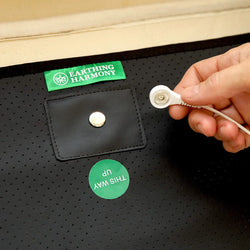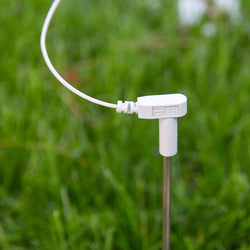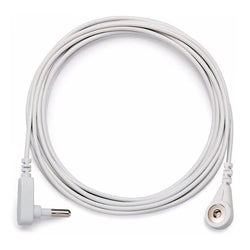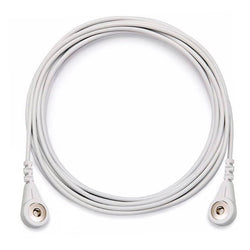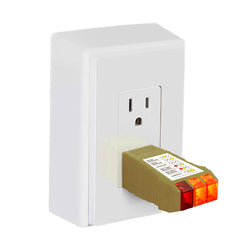Athletes and exercise enthusiasts have a lot to gain from Earthing:
● Less muscle damage.
● Reduced inflammation and pain.
● Reduced exercise-induced blood thickness.
● Quicker recovery time.
What the Research Says
In 2010, exercise physiologist Richard Brown of the University of Oregon’s Human Physiology Department conducted a study demonstrating how Earthing significantly reduces the degree and duration of soreness and inflammation after intense exercise with barbells that created muscle damage. Such damage and discomfort is common in the sports and fitness world, and goes by the name of delayed onset muscle soreness, or DOMS. There is no known remedy for lessening and shortening DOMS. Earthing may be the first!
In 2015, Dr. Brown published a second study measuring the effect of grounding on DOMS. This time, he took a group of 32 healthy young men were either grounded or sham-grounded for several hours on two consecutive days following exercise sessions of 200 half-knee bends. There was a significant increase of creatine kinase (CK), an important enzyme associated with muscle damage, among the non-grounded men but not the grounded men. The study suggests that grounding after physical exercise and performance may speed recovery as a result of less muscle damage.
When you damage muscles with strenuous exercise, Dr. Brown explained to the Earthing Institute, such as when you do the toe raises, CK leaks from the muscle. “We measured this,” he explained. “What was amazing is that the people who were sham grounded had a significantly higher leakage of CK on day 1 post exercise. Those who were grounded raised a little, but not to the point of significance.” To read the second DOMS study, published in the Open Access Journal of Sports Medicine, click here.
In 2019, Austrian researchers at the University of Salzburg investigated the recovery of 22 healthy students (10 women, 12 men) who slept either grounded or not grounded for ten days after a single intense downhill running session on a treadmill that produced significant DOMS and fatigue. The researchers found that the 12 individuals who slept grounded had faster recovery and/or less indicators of muscle damage and inflammation. grounded sleeping was shown to result in faster recovery and/or less pronounced markers of muscle damage and inflammation.
Specifically, they concluded, “our preliminary results with respect to the detailed blood analysis strongly support the view that grounded sleeping modulates key events in the early stages of muscle regeneration at both cellular and molecular levels. Based on the investigated immunological parameters, the modulatory effects of grounded sleeping seem to dampen inflammatory responses.”
Based on analyses of blood and immunological data, they concluded that grounding could represent a “simple methodology to enhance” both short and long-term recovery after intensive training or competition. The study was published in the online journal Frontiers in Physiology and can be seen here.
In 2013, a group of Polish researchers measured blood urea, an indicator of muscle and protein breakdown, from samples taken before and after rigorous exercise on a stationary bicycle. The results revealed that grounding compared to non-grounding during the activity (30 minutes) and recovery (40 minutes) significantly lowered urea levels. Breakdown was less; the body has less to repair. The results were published in the online journal Evidence-Based Complementary and Alternative Medicine.
The Earthing Effect on Yoga Practice
In 2015, Richard Brown tested Earthing in a yoga experiment. As popularly practiced these days, yoga has become an intense activity in which DOMS may occur after sessions, just like other forms of exercise.
Dr. Brown enrolled twenty-eight beginning yoga students for his experiment. They were randomly divided to be grounded or fake-grounded during a mild hour-long session that included ten yoga poses repeated five times. Blood was drawn before and after the session for laboratory analysis of viscosity, that is, blood thickness. It is known that exercise increases muscle damage, produces inflammation in the body, and rapidly increases blood viscosity, an expression of inflammation. This is a short-term effect.
It was not expected that the mild level of the yoga routine would produce much muscle damage but it would still produce an exercise-related inflammatory response affecting blood viscosity. Could Earthing blunt this effect? A prior study, but not exercise-related, demonstrated a significantly improved blood thinning (viscosity reducing) effect of Earthing among generally healthy subjects.
Inflammation generates tissue damaging free radicals, very reactive molecules that are electronegative (attracting electrons) molecules. It is expected that the negative charge on the surface of red blood cells weakens during and after exercise, as a result of loss of electrons to increased free radical activity. This effect would generate more viscous blood than normal because the weaker the negative charge on red blood cells, the greater their tendency to clump and the more viscous the blood becomes.
Blood viscosity influences the ability of blood to flow through the circulatory system, and is considered a major indicator of blood vessel health as well as a predictor of a number of chronic diseases. The more viscous (thicker) the blood, the greater the degree of inflammation in the body.
The blood analysis after the single yoga session showed that the grounded beginners had a significant reduction in post-exercise blood viscosity, compared to the participants who were fake-grounded. They had a slight increase in viscosity. There was a clear difference between the two groups.
The study provided yet another indicator – blood viscosity − of how Earthing curbs inflammation. Dr. Brown theorized that electrons from grounding scavenged free radicals, thus blunting exercise-induced inflammation, as seen by decreased blood viscosity among the grounded participants. The yoga study was published online in 2015 in the Open Journal of Preventive Medicine. You can read the full study here.
Real-life Experiences
The exercise research helps to understanding the benefits of grounding reported by athletes and health professionals, including the dramatic results during several Tour de France races. To read about the experience of former Sports Chiropractor of the Year, and see a video clip that includes his successful use of grounding at the Tour de France, click here.
Although we still have much to learn about the nitty-gritty, the end result is clear – less inflammation, less pain, quicker healing and recovery – and with implications far beyond the world of exercise and sports. Inflammation and accompanying pain are involved with many serious chronic diseases as well as with common injuries and surgery.
For prevention and recovery in all these areas, Earthing has much to offer.






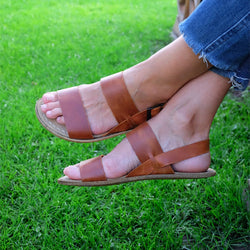
 Shoes
Shoes
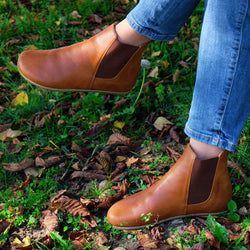 Boots
Boots
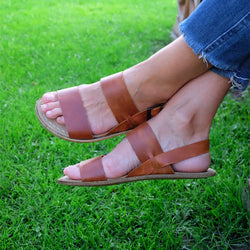 Sandals
Sandals
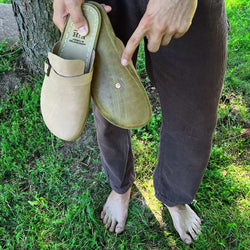
 Shoes
Shoes
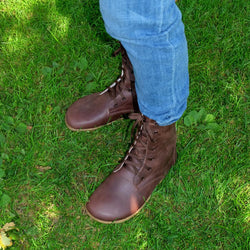 Boots
Boots
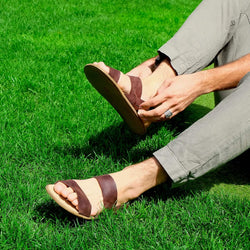 Sandals
Sandals

